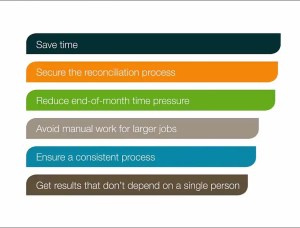
Do You Know Your Line Item Profitability?
Contents
 How transactional accounting reveals the financial insights you may be missing
How transactional accounting reveals the financial insights you may be missing
To the seasoned world of accounting, ecommerce is still in its infancy. As such, it’s no surprise that bookkeeping practices of old are often used to serve the most basic needs of this decidedly modern industry. For example, although journal-entry accounting can be a quick way to summarize and book revenue and expenses of an ecommerce business, it falls short in providing many other important pieces of like which products are making or losing money or which geographic areas are cheapest to ship. This is especially true for those selling complex product catalogs on multiple sales channels.
What’s wrong with journal-entry accounting? It lacks depth.
Modern electronic accounting systems like QuickBooks are not journal-entry accounting systems. While they do provide the ability for an accounting professional to directly enter ledger changes as a journal entry, this feature is provided as an intended method of correction or as a means of entry for otherwise unbookable items. This feature is not intended to be used as the regular method of entering product sales, merchant expenses, vendor purchases, or shipping fees—which represent just a few of many commonly misused journal entries.How transactional #accounting reveals the financial insights you may be missing. #Ecommerce @QuickBooks #Webgility Click To Tweet
Also in a journal-entry system, the bookkeeper or accountant may complete a single batch entry to the sales income account for all revenue generated by the transaction. He or she also may post a batch journal entry for any merchant account expense on the order, and yet another summarized entry for any fulfillment fees booked for that order. So this bookkeeper would have taken several actions to book very generalized information about this order and, while the information itself is correct, it still lacks depth. Basically, journal-entry accounting is a temporary bandage on a problem that will only grow and become unmanageable as the business grows.
What is transactional accounting?
Transactional accounting is when entries are created from transactional documents such as bills, invoices, and credit card charges. This type of accounting allows for much greater transactional detail than a simple journal entry, while simultaneously creating a link with related transactions such as purchase orders, bills, and payments. Many accounting systems like QuickBooks Online and QuickBooks Desktop Enterprise are built around transactional accounting. For example, instead of making a general-ledger entry to a sales-income account to book revenue from a single online sale (or a day of sales), a receipt is filled out with a deposit to account, products, and services with prices and inventory relieved or removed, as well as merchant and shipping charges.
This single transaction covers not only the revenue ledger entry to the sales account for the items, but automatically creates several related journal entries behind-the-scenes. Because items on a transaction are inherently tied to accounts (income, cost, asset), when used on a transaction, they create their own ledger entry to add income and remove asset value. Journal-entry accounting would require that each of these steps be posted manually.
Why make the switch to transactional accounting?
Transactional accounting allows you to process orders in fewer steps and produce more detailed financial reporting. Those details provide a more accurate and analytical view of the business’ cash flow and processes, and this happens without additional data entry, saving countless hours. Here it’s broken down a bit further:
-
- The order is created by the bookkeeper as a sales receipt.
-
- Items such as products, shipping income, and fees are added to the order.
-
- Prices and quantity are adjusted.
- The sales receipt is saved and deposited into the selected account.
Because the products and services have already been assigned to accounts for income and cost of goods sold (COGs), this single transaction has already created account ledger entries for every piece of data included in that transaction, therefore:
-
- The cost of products was recorded when they were received in inventory, and so the value of each is automatically deducted from the current inventory asset value when each item is sold.
-
- Merchant account fees and shipping fees are removed from the deposit value via their associated service items on the order, and consequently those are automatically booked as expense-ledger entries.
- The resulting deposit total reflects both revenue and expenses—a complete picture of the order—rather than fragments and provides an incredibly clean audit trail.
Even though transactional accounting front-loads the work of associating accounts, products, services, sales channels, and customers, it pays off with a great detail and accuracy. From a high level, understanding and utilizing transactional accounting is an important step in proactively managing your growing ecommerce company.
Parag is the founder and CEO of Webgility, automating ecommerce accounting and operations for 5000+ businesses. His vision is to empower SMBs, multichannel merchants, and wholesalers and help them scale through AI-powered automation.






